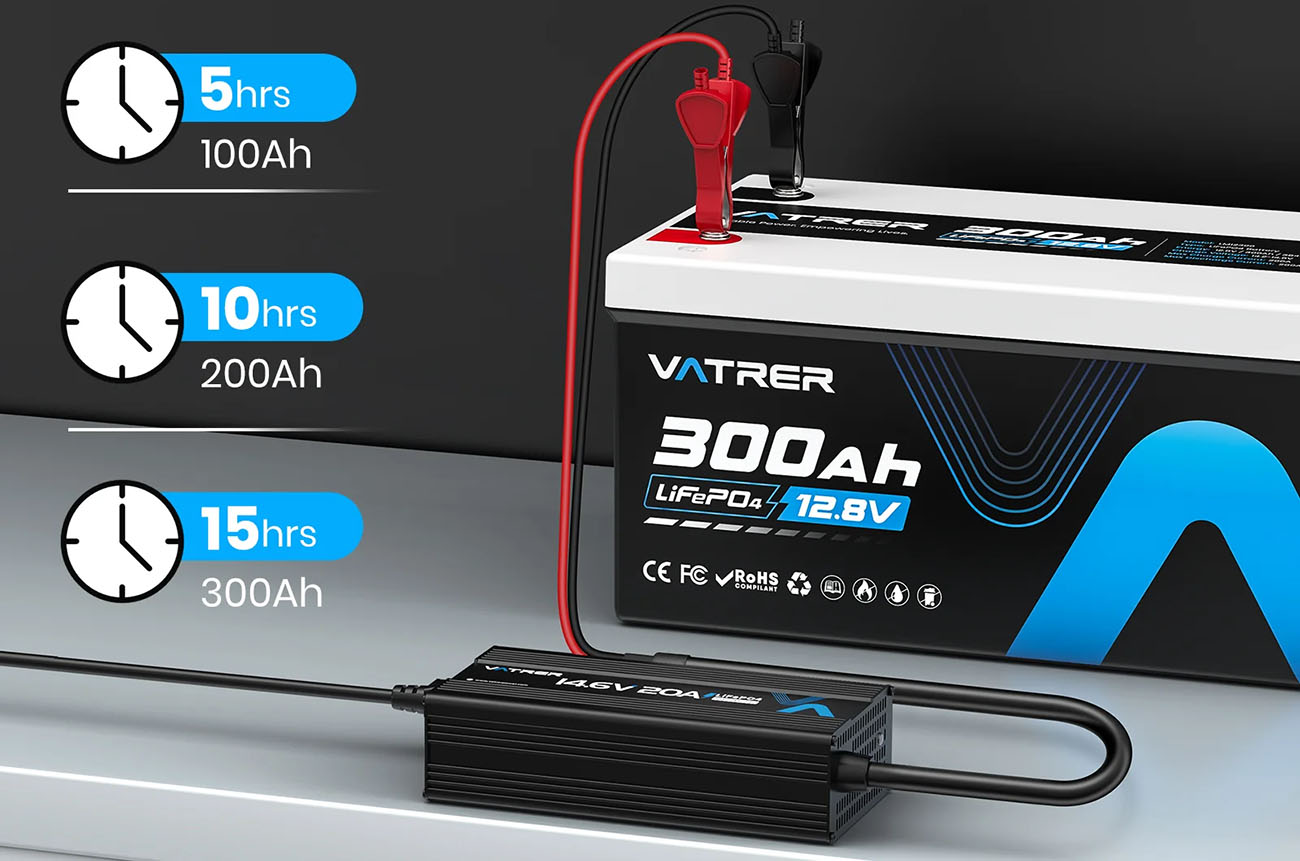The current transition to renewable energy, electric vehicles and portables all boil down to energy storage. Out of the numerous possible configurations, the 100Ah lithium battery is now a standard due to its size, capacity and reliability balance. It is not too large to power necessary equipment over hours but small enough to be carried and implemented into other systems.
Know What 100Ah Lithium Battery Means?
The rating of 100 Ah refers to the quantity of charge that a battery can take. Practically the unit of 100Ah is capable of providing 100 amps of current in 1 hour or less current in a longer duration. Combined with a nominal 12 volt system, this amounts to approximately 1.2 to 1.3 kilowatt-hours of stored power.
A majority of the batteries in this category are currently lithium iron phosphate (LiFePO4) based. The technology is characterized by safety, stability in the performance and high cycle life. The 100Ah lithium battery allows a more profound discharge than the older models that use lead-acid, allowing the user of the battery to utilize a greater portion of the stored energy without shortening the life of the battery.
The benefits of a 100Ah Lithium Battery.
The primary benefits of this format are a long cycle life. Most of these lithium batteries with this capacity can be charged and discharged over 2000 times. This can be translated to years of operation without a significant loss in performance to the users.
Efficiency is another factor. The efficiency of a round trip of a 100Ah lithium battery is typically over 90%. That is, the majority of the energy invested into the battery can be used. A higher rate of charge can also be used and this is particularly useful with solar energy storage or back up systems where time is of the essence.
Another field whereby lithium technology is strong is in weight. A typical 100Ah lithium battery is half the weight of a similar lead-acid battery. This weight loss enables the handling, installation and use, as a part of a mobile system in a recreational vehicle, a boat or off-grid expedition.
Uses in Industry
The 100Ah lithium battery can be used in various areas due to the versatility of its application:
Renewable Energy Systems: These are systems that are used to store surplus solar or wind energy that is then used when the generators are not producing any energy.
Recreational Vehicles and Marine Use: Powers appliances, lights, and navigation equipment without loading them with unneeded weight.
Backup Power: It is an excellent backup supply in case of a lapse of power to households, telecom towers and commercial setups.
Electric Mobility: It supplies power to small electric cars, scooters and carts.
Industrial Support: Provides stable support of tools, remote monitoring devices and UPS.
Technical Considerations
The specifications of a lithium battery should be checked when incorporating a 100Ah battery. Current discharged continuously, usually about 100 amps to this size, is the determining factor on which devices can be supported. There is a Battery Management System built-in that safeguards the battery during overcharging, over-discharging, short circuiting and overheating.
Also to be taken into consideration is operating temperatures.
Although lithium batteries are stronger than most other alternatives, they can deteriorate in extreme heat or cold. To store it, it is preferable to keep the battery at moderate charge level in a controlled environment to maintain health.
Future Outlook
The need to have scalable and efficient storage will increase as the needs of energy increase. The 100Ah lithium battery is packaged in such a way that it stays a core option due to its flexibility. Large storage banks are constructed by putting together several units side by side or in series in a multitude of systems. This scale-up modular design enables homeowners, businesses and industries to increase their energy storage capacity as their requirements change over time.
Conclusion
The 100Ah lithium battery is now a viable remedy to various energy storage usage. It has high efficiency, long service life, and portability, thus being applicable in renewable energy, mobility, marine and backup systems. This format remains important to the way modern systems store and use energy by filling the gap between small portable units, on the one hand, and large industrial batteries, on the other.

